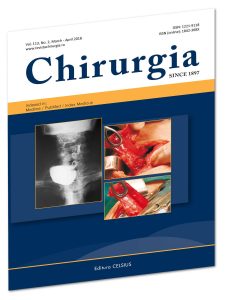TIF Procedure offers excellent short and long-term relief for the majority of chronic GERD patients.
 REDMOND, Wash – EndoGastric® Solutions today announced the publication of a meta-analysis supporting the clinical utility of Transoral Incisionless Fundoplication (TIF®) 2.0 in the treatment of refractory gastroesophageal reflux disease (GERD). The TIF 2.0 procedure is a minimally invasive endoscopic option that enables anatomical correction of the gastric valve without incisions or complications associated with laparoscopic surgical fundoplication. The publication, Transoral Incisionless Fundoplication (TIF 2.0): A Meta-Analysis of Three Randomized, Controlled Clinical Trials, was published in the March/April issue of Chirurgia (Surgery).
REDMOND, Wash – EndoGastric® Solutions today announced the publication of a meta-analysis supporting the clinical utility of Transoral Incisionless Fundoplication (TIF®) 2.0 in the treatment of refractory gastroesophageal reflux disease (GERD). The TIF 2.0 procedure is a minimally invasive endoscopic option that enables anatomical correction of the gastric valve without incisions or complications associated with laparoscopic surgical fundoplication. The publication, Transoral Incisionless Fundoplication (TIF 2.0): A Meta-Analysis of Three Randomized, Controlled Clinical Trials, was published in the March/April issue of Chirurgia (Surgery).
This publication is a meta-analysis of three randomized clinical trials comprising of 223 patients with chronic long-term refractory GERD on optimized PPI therapy and is the first published Evidence Level Ia study comparing TIF 2.0 procedure with PPI therapy and sham endoscopy with or without PPI therapy. The analysis suggests that the TIF 2.0 is a durable, effective procedure that controls symptoms and allows patients to discontinue PPI use at rates similar to traditional surgical techniques with improved safety profile and fewer long-term side-effects.
“Given the potential side-effects associated with long-term PPI dependency and the known adverse events of traditional surgical options, validated treatment options are urgently needed to treat the 19 million daily reflux sufferers,” said Nirav Thosani, MD, MHA, Director of Advanced Endoscopy, Ertan Digestive Disease Center, Memorial Hermann Hospital, Texas Medical Center. “The TIF 2.0 procedure provides an alternative option for patients who want to eliminate or reduce medical therapy and do not want to undergo traditional surgery.
“We are extremely pleased to see a growing body of clinical data supporting both clinical and quality of life benefits associated with the TIF 2.0 procedure,” said Skip Baldino, President and CEO of EndoGastric Solutions. “However, our excitement about this new analysis is tempered by our sadness for the loss of Dr. Lauren Gerson, lead author on the publication, who passed away last year. Dr. Gerson was a dedicated clinician and researcher, and we hope this final meta-analysis will serve as a testament to the numerous substantive contributions she made to advancing the care and outcomes of patients with gastrointestinal disorders.”
